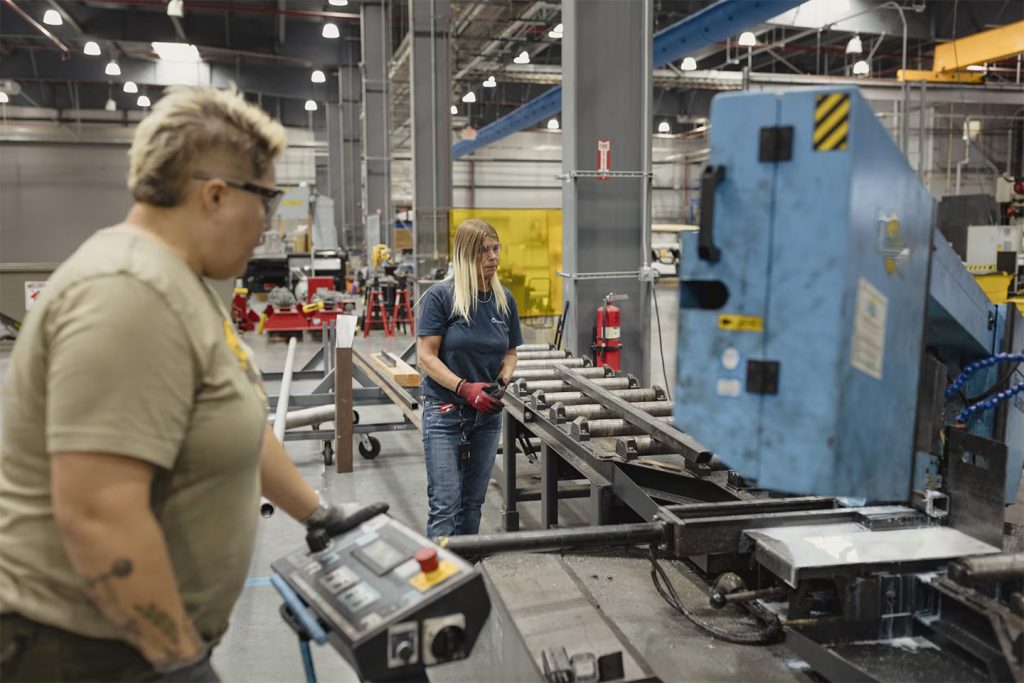
Article by Jennifer Hiller, courtesy of The Wall Street Journal.

Google will back the construction of seven small nuclear power reactors in the US, a first-of-its-kind deal that aims to help feed the tech company’s growing appetite for electricity to power AI and jump-start a US nuclear revival.
Under the deal’s terms, Google committed to buying power generated by seven reactors to be built by nuclear energy start-up Kairos Power. The agreement targets adding 500 megawatts of nuclear power starting at the end of the decade, the companies said on Tuesday.
The arrangement is the first that would underpin the commercial construction in the US of small modular nuclear reactors. Many say the technology is the future of the domestic nuclear power industry, potentially enabling faster and less costly construction by building smaller reactors instead of behemoth bespoke plants.
“The end goal here is 24/7, carbon-free energy,” said Michael Terrell, senior director for energy and climate at Alphabet’s Google. “In order to meet goals around round-the-clock clean energy, you’re going to need to have technologies that complement wind and solar and lithium-ion storage.”
The moves comes as the Coalition pushes for the establishment of a nuclear industry in Australia, with its energy policy based on the development of small-scale reactors to bolster renewables.
The nuclear industry’s fortunes are increasingly getting hitched to Big Tech. Power demand is rising in parts of the US for the first time in years, much of it driven by the need to build more data centres for AI. That has sent the tech industry on the hunt for massive amounts of energy. Last month, Constellation Energy and Microsoft struck a deal to restart the undamaged reactor at Pennsylvania’s Three Mile Island, the site of the country’s worst nuclear accident. Earlier this year, Amazon purchased a data centre at another Pennsylvania nuclear plant.
The 500MW of generation that would be built by Kairos for Google is about enough to power a midsize city – or one AI data centre campus. The agreement answers questions that have bedevilled small reactor designs: Who would pay the higher price for a first-of-a-kind project? And who would order enough to get an assembly line started? The concept, which remains to be proven, is that building the same thing over and over in a factory would drive down costs.
Kairos plans to deliver the reactors between 2030 and 2035. Financial terms weren’t disclosed, but the companies entered into a power-purchase agreement, similar to those used between corporate buyers and wind and solar energy developers.
The project site – or whether there could be reactors at multiple locations – hasn’t been determined, the companies said.
Google would have data centres somewhere in the region near the Kairos reactors, but it hasn’t been determined whether they would receive power directly from the nuclear plants or from the grid. Google could count the addition of nuclear power towards meeting its carbon-reduction commitments.
Instead of water, which is used in traditional reactors, the Kairos design uses molten fluoride salt as a coolant. The units for Google will include a single 50MW reactor, with three subsequent power plants that would each have two 75MW reactors, Kairos said.
That compares with about 1000MW at reactors at conventional nuclear power plants.
Kairos will have to navigate complex approvals through the US Nuclear Regulatory Commission, but already has clearance to build a demonstration reactor in Tennessee, which could start operating in 2027.
Kairos has a manufacturing development facility in Albuquerque, New Mexico, where it is building test units. Nearly 20 per cent of US power comes from nuclear plants, but the pipeline of big, new projects has been halted because of high costs and long time lines.
The second of two new reactors at Georgia’s Vogtle nuclear plant was completed this northern spring. Before that, the most recent nuclear reactors in the US were completed in 2016 and 1996.
Tech companies such as Google started signing power-purchase agreements with renewables developers in 2010.
17. 10. 2024
